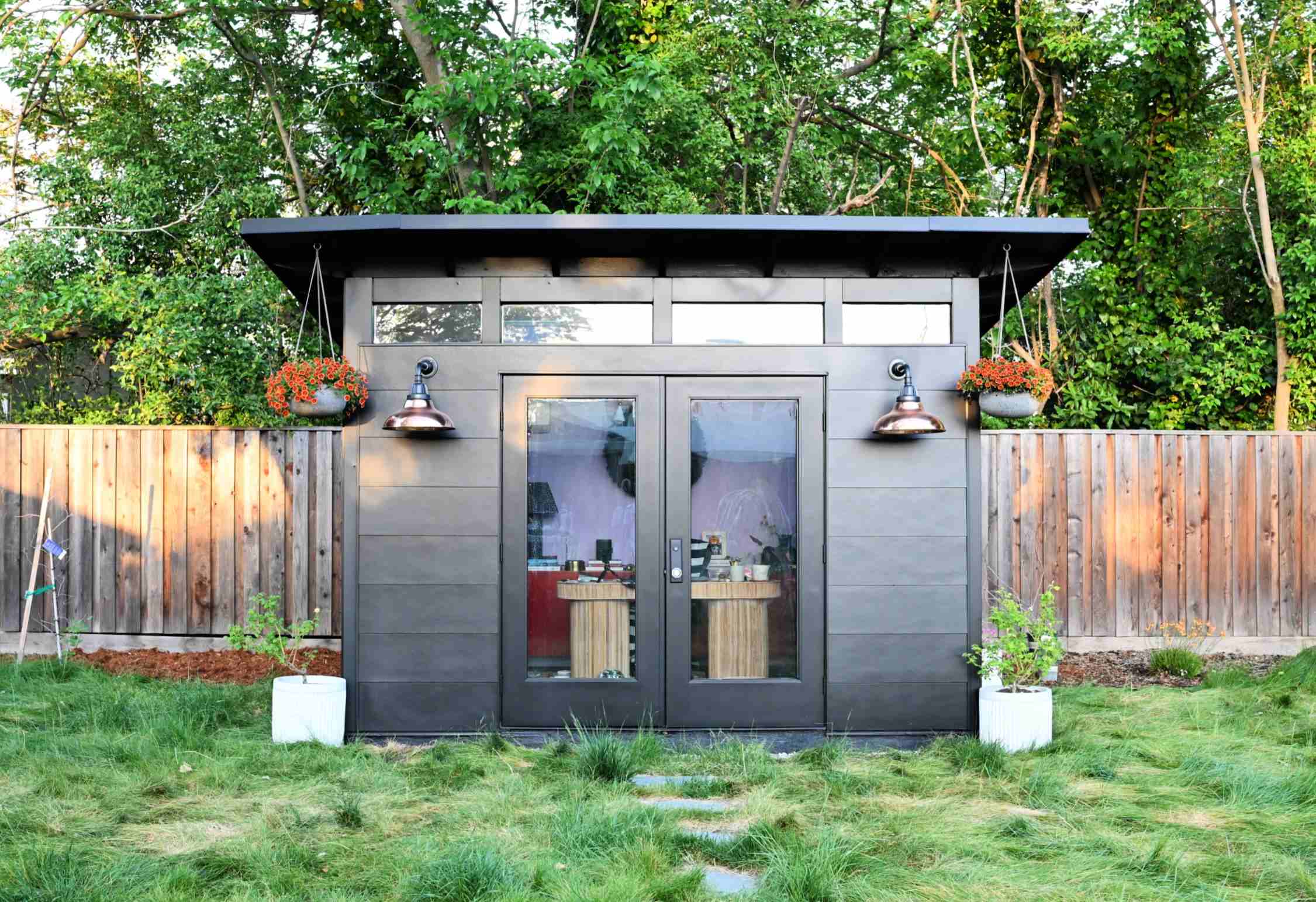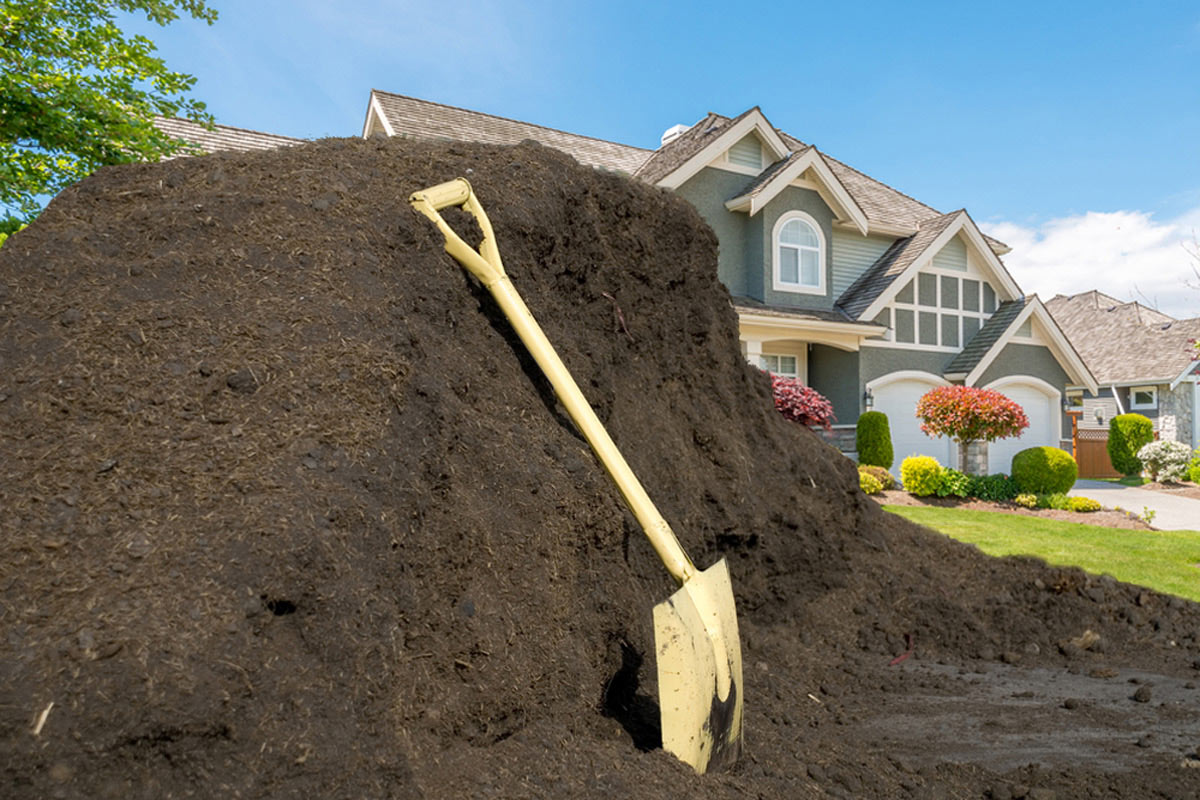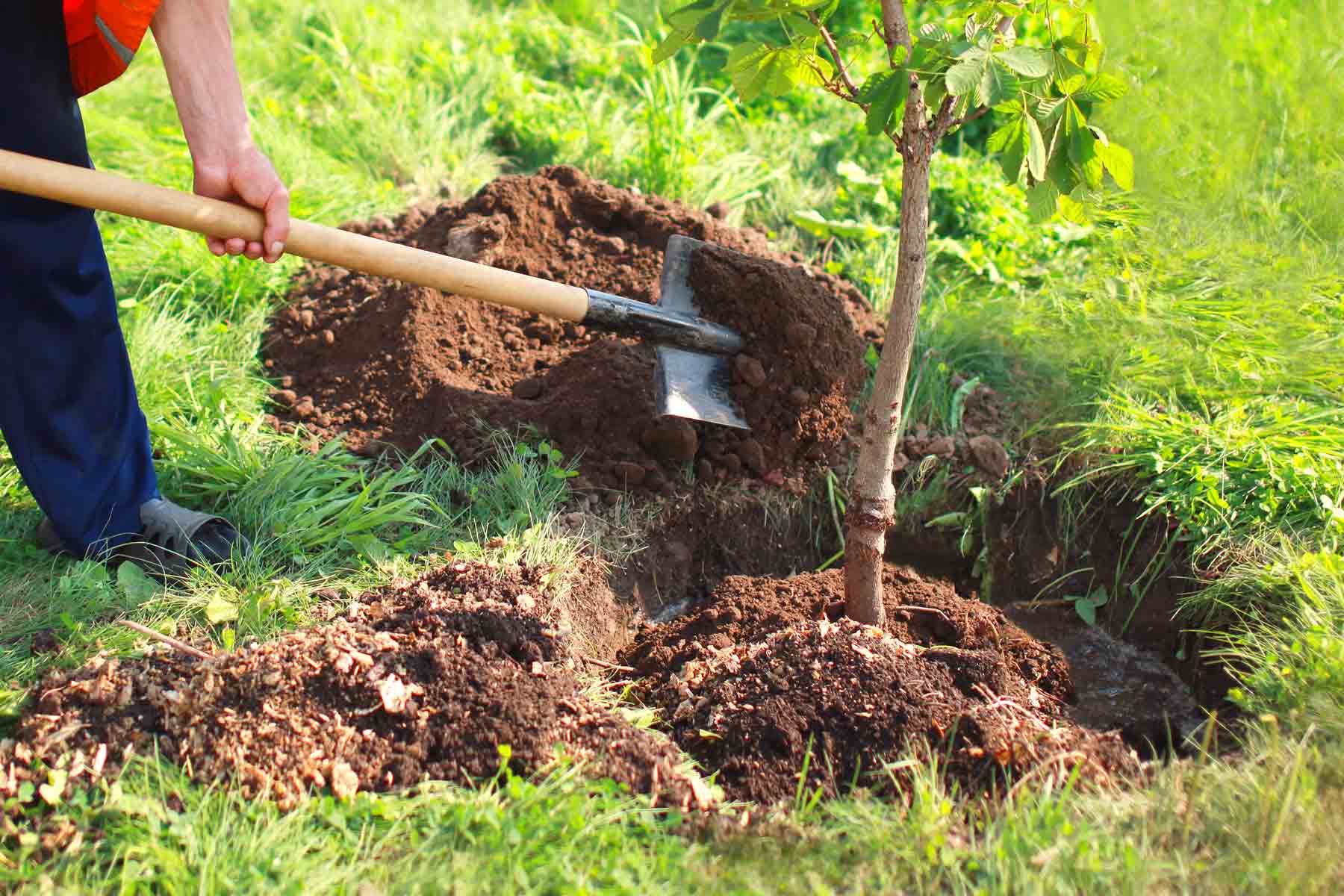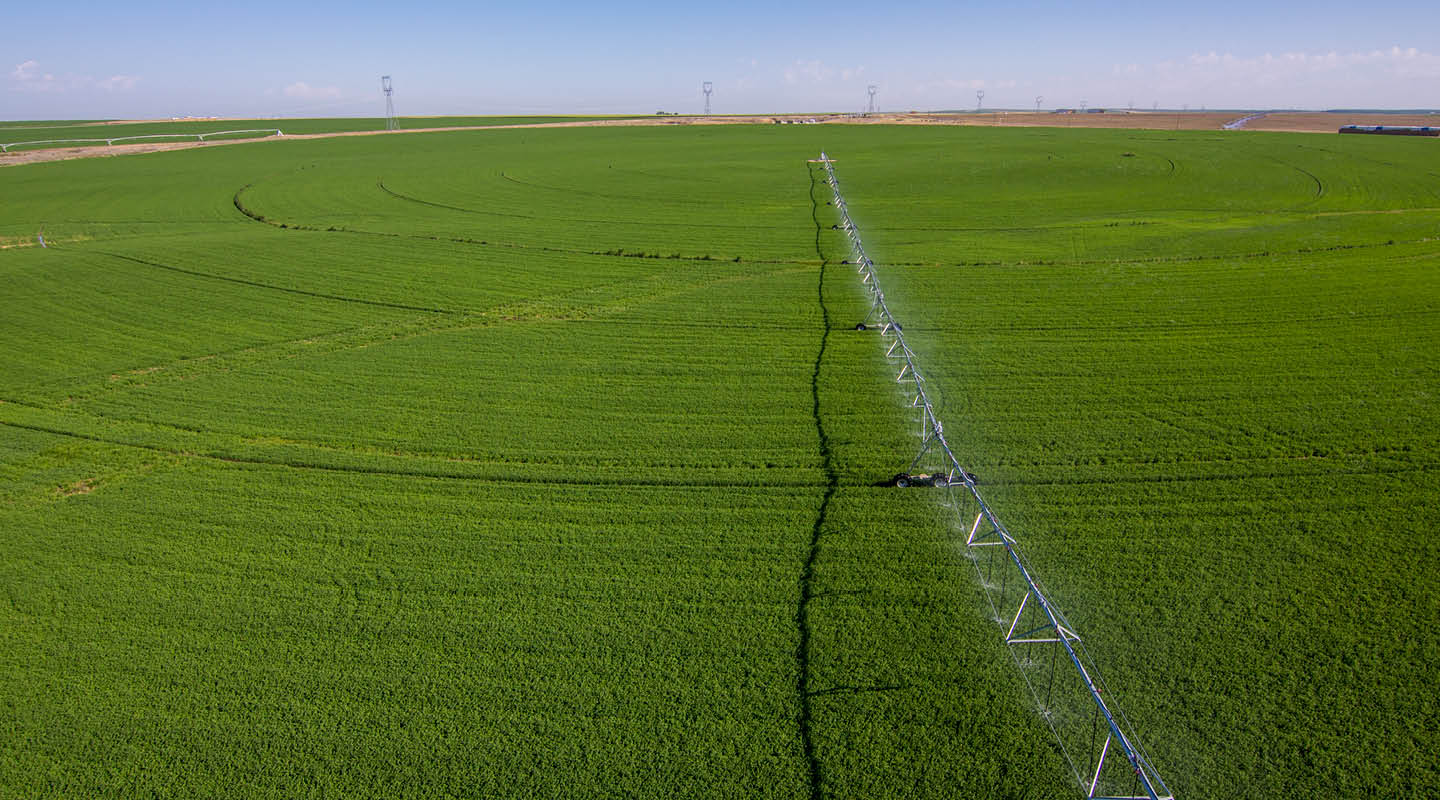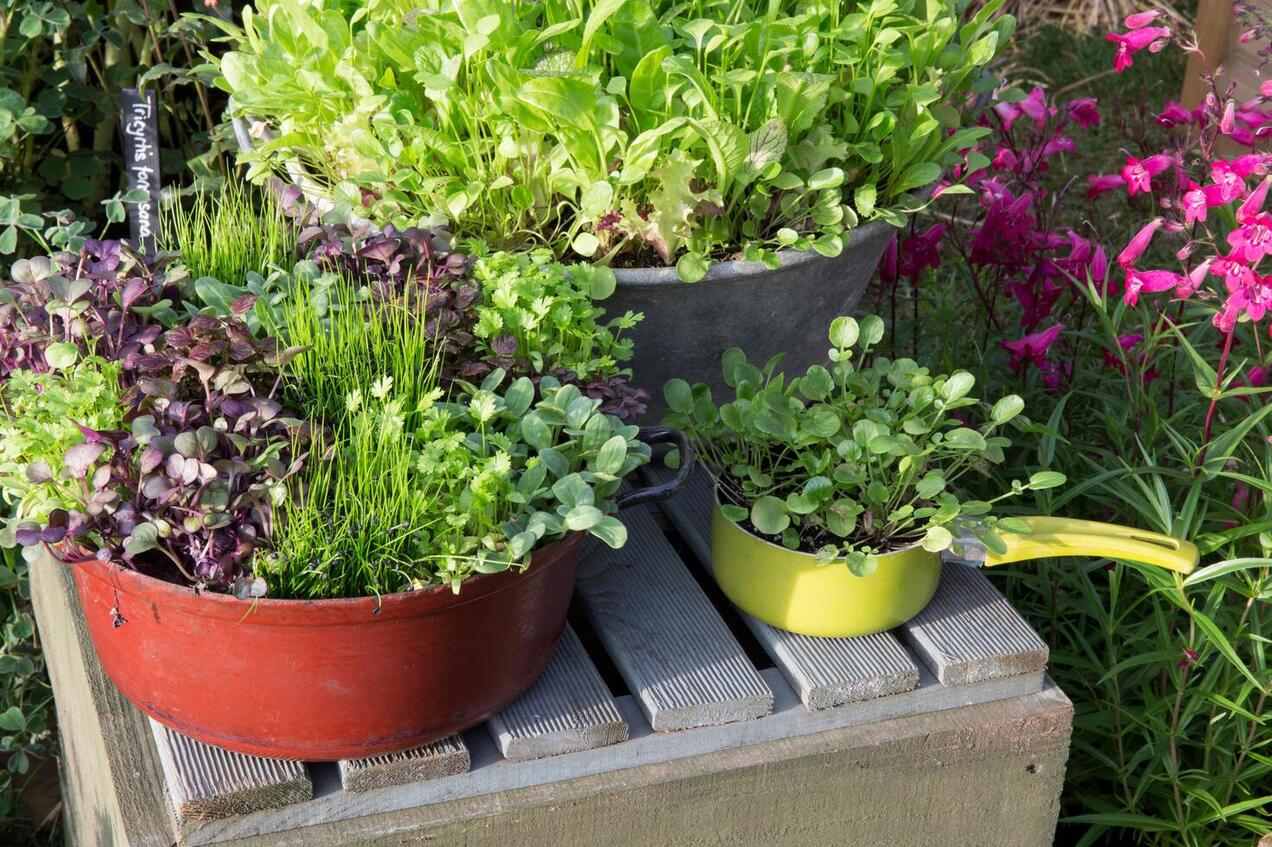Home>Garden Design>Planning Your Garden>How Much Landscaping Cost


Planning Your Garden
How Much Landscaping Cost
Modified: January 22, 2024
Planning your garden? Learn how much landscaping costs to create the perfect outdoor space. Get estimates and tips from experts on budgeting for your dream garden.
(Many of the links in this article redirect to a specific reviewed product. Your purchase of these products through affiliate links helps to generate commission for Chicagolandgardening.com, at no extra cost. Learn more)
Table of Contents
Introduction
Welcome to the world of landscaping! Whether you have a small backyard or a sprawling estate, creating a beautiful outdoor space can greatly enhance the aesthetics and functionality of your property. However, before diving into the exciting world of plants, flowers, and hardscapes, it’s important to understand the factors that influence landscaping costs.
Landscaping costs can vary greatly depending on various factors such as the size of your project, the complexity of the design, choice of materials, and the location of your property. Whether you’re looking to create a tranquil garden oasis, an inviting outdoor entertainment area, or simply update your existing landscaping, it’s crucial to have a realistic budget in mind.
By having a clearer understanding of the average costs for different landscaping services and projects, you can make informed decisions about how to allocate your budget and prioritize your goals. In this article, we will explore the factors that influence landscaping costs, the different types of landscaping services available, average cost ranges for popular projects, cost-saving tips, and the pros and cons of DIY landscaping versus hiring a professional.
Landscaping is a combination of art and science, involving the arrangement of plants, trees, shrubs, and other elements to create a visually pleasing and functional outdoor space. Beyond the aesthetics, landscaping can also provide practical benefits such as erosion control, energy efficiency, and increasing property value. Whether you’re a green thumb enthusiast or a novice gardener, understanding the costs associated with landscaping is vital for planning your dream outdoor space.
In the following sections, we will delve into the various factors that can impact the cost of your landscaping project, along with valuable tips and insights to help you make the most of your budget. Let’s embark on this journey together and discover the captivating world of landscaping costs!
Factors Influencing Landscaping Costs
When it comes to landscaping, several factors can influence the overall cost of your project. Understanding these factors can help you allocate your budget effectively and make informed decisions. Here are some key factors that can impact landscaping costs:
- Size of the Project: The size of your landscaping project is one of the primary factors that can affect its cost. Larger projects will typically require more materials and labor, resulting in higher costs. Additionally, extensive landscaping projects may require heavy machinery, which can further contribute to expenses.
- Design Complexity: The complexity of your landscaping design can also impact costs. Intricate and elaborate designs that involve unique features, multiple levels, or intricate hardscapes will require more time, skill, and materials to execute, thus increasing the overall cost.
- Choice of Materials: The materials you choose for your landscaping project can significantly impact costs. From the type of plants and trees to the quality of hardscape materials such as pavers, stones, and decking, each choice comes with its own price tag. Higher-quality materials generally cost more but can offer improved durability and aesthetic appeal.
- Site Accessibility: The accessibility of your property can affect the cost of landscaping. If your property is challenging to access or located on a slope, it may require additional equipment or labor to complete the job, resulting in higher costs.
- Location: The location of your property can also influence landscaping costs. Costs can vary based on factors such as regional pricing differences, availability of materials, and local labor rates.
It is essential to consider these factors while planning your landscaping project to ensure that you have a realistic budget in place. Keep in mind that while certain factors may increase costs, they can also contribute to the long-term value and enjoyment of your outdoor space. Balancing your budget with your desired outcomes is crucial.
Now that we have explored the factors that can influence landscaping costs, let’s move on to the next section, where we will discuss the different types of landscaping services available and their associated costs.
Types of Landscaping Services
Landscaping encompasses a wide range of services that can transform your outdoor space into a stunning and functional area. Depending on your specific needs and goals, you can choose from various landscaping services. Here are some of the most common types of landscaping services:
- Landscape Design: Landscape design is the process of creating a blueprint for your outdoor space. It involves planning and arranging elements such as plants, trees, hardscapes, pathways, and water features to create an aesthetically pleasing and functional design. Landscape designers work closely with clients to understand their vision and create a customized plan that suits their needs.
- Planting and Garden Design: This service focuses on selecting and planting the right mix of plants, flowers, and shrubs to create a vibrant garden. Garden design involves choosing plants that complement each other in terms of color, size, and bloom time to create a visually appealing and balanced landscape.
- Hardscaping: Hardscaping involves the use of non-living elements to enhance the functionality and aesthetics of your outdoor space. This can include the installation of patios, decks, retaining walls, walkways, pergolas, and outdoor kitchens. Hardscaping adds structure and definition to your landscape, creating outdoor living spaces that are both inviting and functional.
- Irrigation Systems: Installing an irrigation system is crucial for maintaining the health and vitality of your plants and lawn. This service includes designing and installing an efficient irrigation system that delivers the right amount of water to different areas of your landscape, ensuring proper hydration without wastage.
- Landscape Lighting: Landscape lighting enhances the beauty and safety of your outdoor space. It involves the strategic placement of lights to highlight architectural features, illuminate pathways, and create a warm ambiance. Landscape lighting not only extends the usability of your outdoor space but also adds a touch of elegance and security.
- Maintenance and Lawn Care: Once your landscaping is complete, ongoing maintenance is crucial to keep it looking its best. This includes mowing, trimming, fertilizing, weed control, and periodic inspections to ensure the health and vitality of your plants and lawn.
The cost of these landscaping services can vary based on the factors we discussed earlier. Complex designs, extensive hardscaping, or larger planting projects will generally incur higher costs. Additionally, the choice of materials, location, and ongoing maintenance requirements will also impact the overall price.
Now that we have explored the different types of landscaping services available, let’s move on to the next section, where we will discuss the average cost ranges for some popular landscaping projects.
Average Cost of Popular Landscaping Projects
Landscaping projects can vary widely in terms of size, complexity, and materials used, which in turn can significantly affect the cost. To give you a general idea of the average cost ranges for popular landscaping projects, here are some estimates:
- Basic Landscape Design: A basic landscape design plan can range from $500 to $2,500, depending on the size of your property and complexity of the design.
- Planting and Garden Design: The cost for planting and garden design can vary greatly based on factors such as the number of plants, their size, and the overall design scope. As a rough estimate, expect to spend anywhere from $1,000 to $10,000 for a well-designed and balanced garden.
- Hardscaping: The cost of hardscaping projects like patios, decks, and walkways will depend on various factors such as materials used, size, and complexity. On average, you can expect to spend between $5,000 and $30,000 for a high-quality hardscaping project.
- Irrigation System: Installing a properly designed irrigation system can range from $2,500 to $6,000, depending on the size of your property and the complexity of the system.
- Landscape Lighting: The cost of landscape lighting typically ranges from $500 to $5,000 or more, depending on the number of lights, complexity of the design, and the quality of the fixtures.
- Maintenance and Lawn Care: Ongoing maintenance and lawn care can vary based on the size of your property and the specific services required. As a general guideline, budget around 10% to 15% of your overall landscaping project cost per year for maintenance.
Remember, these are just average cost ranges, and the actual cost of your landscaping project will depend on your specific requirements. It’s recommended to get multiple quotes from professional landscapers to compare prices and ensure that you are getting a fair deal.
Now that we have explored the average cost ranges for popular landscaping projects, let’s move on to the next section, where we will discuss some cost-saving tips that can help you stick to your budget.
Cost-Saving Tips for Landscaping
Landscaping can be a significant investment, but with some strategic planning and cost-saving techniques, you can manage your budget more effectively. Here are some cost-saving tips that can help you save money on your landscaping project:
- Plan and Prioritize: Before starting your project, create a detailed plan and prioritize the essential elements. This will help you avoid unnecessary expenses and focus on the key aspects of your landscaping design.
- Choose Native Plants: Opt for native plants and shrubs as they are typically more affordable and require less maintenance. Native plants are well-suited to the local climate and can thrive in your specific region, reducing the need for excessive watering and fertilizers.
- Reuse and Recycle: Instead of buying brand new materials, consider reusing or repurposing existing materials. For example, you can repurpose old bricks or stones for pathways or use reclaimed wood for decking or fencing.
- DIY Some Parts: Depending on your skill level and the scope of the project, consider doing some parts of the landscaping yourself. Simple tasks like planting flowers or laying mulch can be done DIY-style, saving you money on labor costs.
- Buy in Bulk: Purchase materials like soil, mulch, or plants in bulk, as this can often result in significant cost savings. Many nurseries and landscaping stores offer discounts for bulk orders.
- Shop Seasonally: Take advantage of seasonal sales and discounts when purchasing plants or materials. Nurseries and garden centers often have promotions during certain times of the year, so plan your purchases accordingly.
- Maintain Regularly: Proper and regular maintenance can help prevent costly issues down the line. Regularly prune your plants, clean your outdoor spaces, and ensure proper irrigation to avoid potential damage or costly repairs in the future.
- Get Multiple Quotes: When hiring a professional landscaper, obtain multiple quotes from different contractors to compare prices and services. This will help you find the right balance between quality and affordability.
By incorporating these cost-saving tips into your landscaping project, you can make the most of your budget without compromising on the overall quality and beauty of your outdoor space.
Now that we have explored some cost-saving tips, let’s move on to the next section, where we will discuss the advantages and considerations of hiring a professional landscaper versus tackling the project yourself.
Hiring a Professional Landscaper
When it comes to landscaping, you have the option to either hire a professional landscaper or tackle the project yourself. While the DIY approach may seem tempting for some, there are several advantages to hiring a professional to bring your landscaping vision to life. Here are some key reasons why hiring a professional landscaper can be beneficial:
- Expertise and Experience: Professional landscapers have years of experience and expertise in designing and executing landscaping projects. They have a deep understanding of plants, materials, and design principles, allowing them to create stunning and functional outdoor spaces.
- Time and Efficiency: Landscaping projects require time, effort, and a certain level of skill. By hiring a professional landscaper, you can save valuable time and ensure that the project is completed efficiently. Professionals have the necessary equipment and knowledge to carry out the work promptly and with precision.
- Access to Resources: Professional landscapers have access to a wide network of resources including nurseries, suppliers, and other industry professionals. They can source high-quality materials at competitive prices, ensuring that your project is completed with the best products available.
- Design Expertise: Landscapers excel in creating visually pleasing and harmonious designs that suit your personal preferences and the overall aesthetics of your property. They can suggest innovative ideas and create a cohesive landscape that seamlessly integrates with your existing architecture.
- Ongoing Maintenance: Many professional landscapers offer ongoing maintenance services to keep your landscape looking its best. This includes regular lawn care, pruning, fertilizing, and any necessary repairs. With professional maintenance, you can ensure the long-term health and beauty of your outdoor space.
- Insurance and Warranty: Reputable professional landscapers carry insurance that covers any damages or accidents that may occur during the project. They also provide warranties on their work, offering you peace of mind and protection for your investment.
While hiring a professional landscaper offers numerous benefits, there are a few considerations to keep in mind. It’s important to conduct thorough research, ask for referrals, and check their portfolio and reviews to ensure you’re hiring a reliable and skilled professional. Additionally, make sure to clearly communicate your expectations, budget, and timeline to avoid any misunderstandings.
Now that we have explored the advantages of hiring a professional landscaper, let’s move on to the next section, where we will discuss the pros and cons of DIY landscaping versus hiring a professional.
DIY Landscaping vs. Hiring a Professional
When it comes to landscaping, you have the option to tackle the project yourself or hire a professional landscaper. Both approaches have their advantages and considerations. Let’s explore the pros and cons of DIY landscaping versus hiring a professional:
- Cost Savings: One of the main advantages of DIY landscaping is cost savings. By doing the work yourself, you can save on labor costs. However, it’s important to note that you may still need to invest in tools, equipment, and materials.
- Creative Control: DIY landscaping allows you to have complete creative control over your outdoor space. You can personally design and execute every aspect of the project according to your vision and preferences.
- Learning Opportunity: Taking on a landscaping project yourself can be a valuable learning experience. You can acquire new skills, expand your knowledge of plants and design principles, and gain a sense of accomplishment.
- Flexibility: DIY projects offer flexibility in terms of timing and execution. You can work on your landscaping project at your own pace and make changes as you go along.
- Expertise and Efficiency: Hiring a professional landscaper ensures that your project is in the hands of experts who have the knowledge, experience, and skills to deliver exceptional results. Professionals have access to resources, can work efficiently, and bring a greater level of expertise to the project.
- Time and Effort: Landscaping projects can be time-consuming and physically demanding. Hiring a professional landscaper saves you time and effort, allowing you to focus on other priorities or simply enjoy your outdoor space sooner.
- Guaranteed Results: Professionals provide warranties and guarantees on their work, ensuring that you receive the desired outcome. If any issues arise, a professional landscaper will address them promptly and efficiently.
- Complexity and Scope: Larger and more complex landscaping projects may require professional expertise to ensure proper planning, execution, and long-term functionality.
Consider your budget, available time, skill level, and the scope of your landscaping project when deciding whether to take the DIY route or hire a professional. It’s important to be realistic about your abilities and the resources required for your vision to come to life.
Ultimately, the choice between DIY landscaping and hiring a professional is a personal one. You may decide to handle smaller projects on your own while seeking professional help for larger or more complex endeavors. Whichever path you choose, remember to prioritize safety, proper planning, and thorough research to achieve the best results.
Now that we have explored the pros and cons of DIY landscaping versus hiring a professional, we have covered all the essential aspects of landscaping costs. Whether you decide to go DIY or hire a professional, planning your landscaping project and being mindful of your budget will help ensure a successful and satisfying outcome for your outdoor space.
Conclusion
Planning your garden and landscaping project involves careful consideration of various factors, including your budget, goals, and personal preferences. By understanding the factors that influence landscaping costs, you can allocate your budget effectively and make informed decisions about the type of landscaping services you need.
We explored the different types of landscaping services available, such as landscape design, planting and garden design, hardscaping, irrigation systems, landscape lighting, and maintenance. Each of these services offers unique opportunities to enhance the beauty and functionality of your outdoor space.
While landscaping projects can vary greatly in cost, we provided average cost ranges for popular projects like landscape design, planting and garden design, hardscaping, irrigation systems, landscape lighting, and ongoing maintenance. These estimates can help you set a realistic budget and prioritize your goals.
In addition to understanding costs, we shared cost-saving tips that can help you make the most of your budget. These tips included planning and prioritizing, choosing native plants, reusing and recycling materials, considering DIY for certain aspects, buying in bulk, shopping seasonally, and maintaining your landscaping regularly.
We also discussed the advantages of hiring a professional landscaper, such as their expertise, experience, access to resources, design expertise, and ongoing maintenance services. However, we acknowledged that DIY landscaping offers cost savings, creative control, a learning opportunity, and flexibility, especially for smaller-scale projects.
Ultimately, the choice between DIY landscaping and hiring a professional depends on your budget, skill level, and the complexity of your project. It’s important to weigh the pros and cons and consider what will best suit your needs and goals.
Whether you decide to embark on a DIY landscaping journey or enlist the help of a professional, planning and budgeting will be key to success. Take the time to research, gather inspiration, create a detailed plan, and obtain multiple quotes to ensure that your landscaping project aligns with your vision and resources.
Now that you have the knowledge and insights to plan your garden and landscaping project, it’s time to turn your outdoor space into a beautiful retreat that reflects your style and enhances your lifestyle. Happy gardening and happy landscaping!
